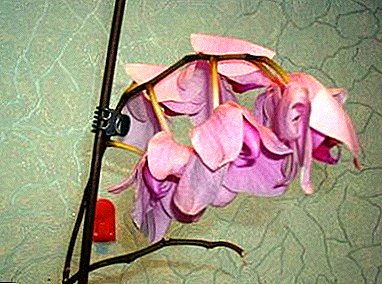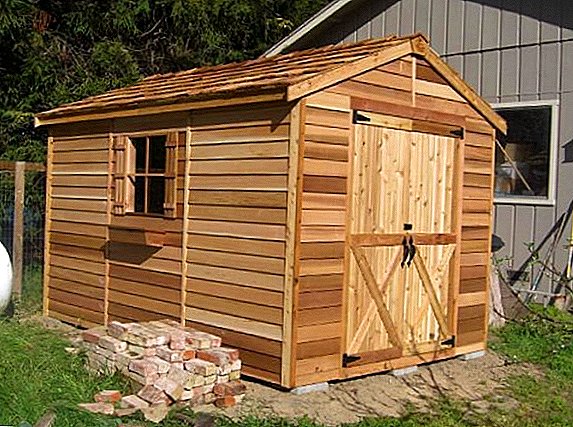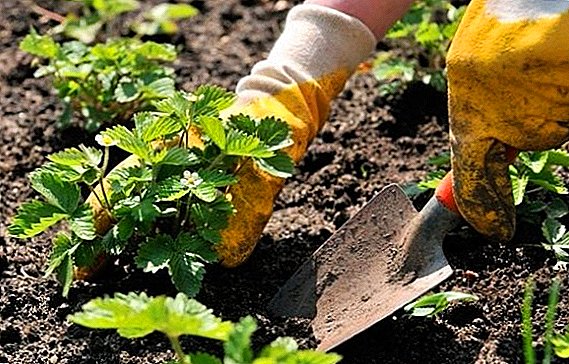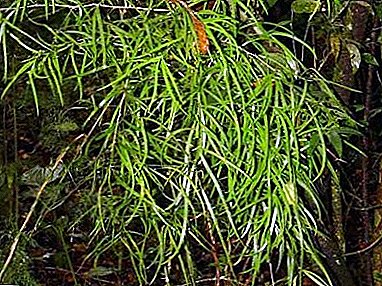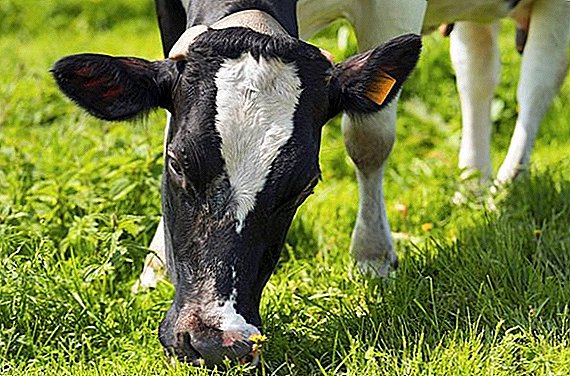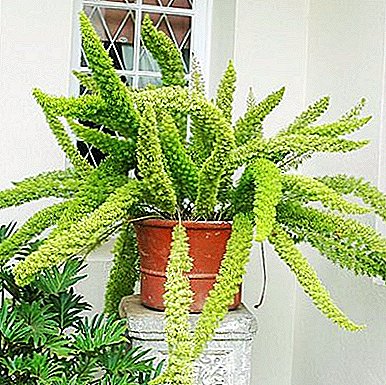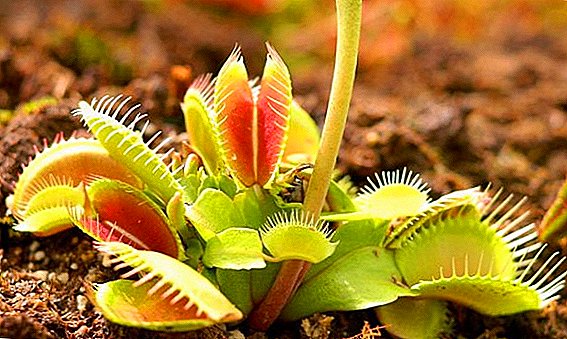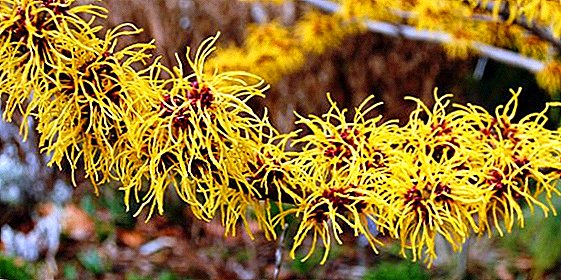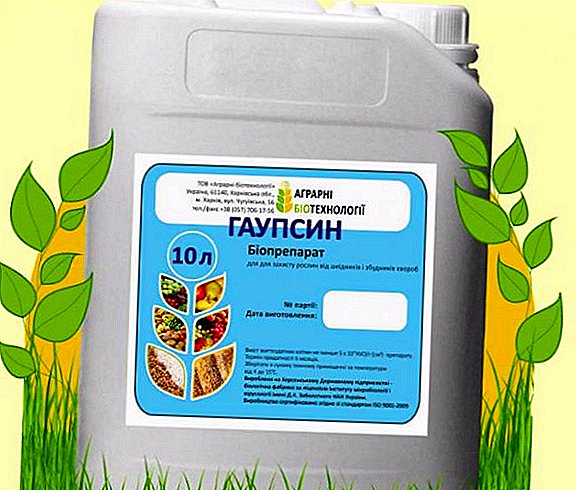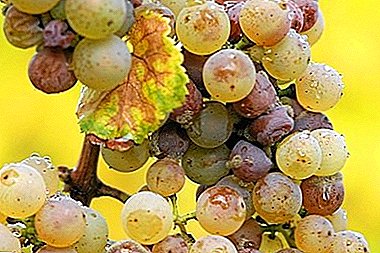
Often, anthracnosis occurs in areas with warm and humid climate: in the south of Russia, in Moldova, Ukraine and Central Asia. Recently, he appeared already in Belarus and middle latitudes.
This is a very dangerous disease that affects mainly grape varieties resistant to mildew and oidium and not treated with fungicides. Anthracnose strikes all parts of the plant: shoots, leaves and berries. How not to miss the signs of the disease and recognize them in the initial stage?
Signs of grape anthracnose
If you do not start on time to carry out preventive measures, then there is every chance of the emergence of this unpleasant disease. First of all, anthracnose leaves are affected. First, they are covered with small dark dots, which after some time turn into small brownish spots with a dark border.
Thanks to these spots, the disease has received another name: Grape pox or Spotted anthracnose.
 A little later, these spots begin to appear on the shoots. Most susceptible to infection young leaves and stems.
A little later, these spots begin to appear on the shoots. Most susceptible to infection young leaves and stems.
These marks quickly grow, covering almost the entire area of the sheet, and acquire a pronounced dirty-pink shade. Damaged leaves dry out and crumble. It is not only the harvest that suffers, the often diseased plant simply dies.
Infected shoots become covered with long brown spotsthat sprout inward, expand and become dark brown. Affected areas begin to crack. In a long drought, shoots dry out and break off, and in wet weather they rot. More often suffer from anthracnose grape stalks, crests and inflorescences.
With the disease of clusters, on the berries appear concave inward round spots of brown color with a violet core. Because of the unusual pattern of these spots, anthracnose is often called the bird's eye. Over time, the berries crack, dry and fall off.
Anthracnose spreads very quickly and can destroy up to 80% of the entire crop. To deal with it is extremely difficult, it is better not to allow the appearance of the disease.
Causes of illness
Anthracnose is fungal disease. Its pathogen can live on the plant for quite a long time, about 5-6 years and does not manifest itself, until a certain point. The fungus overwinters on the shoots and leaves and awakens in early spring. Anthracnose very quickly becomes active at high humidity and t about + 25-35С.
The impetus for its appearance also serve:
- heavy rains with hail;
- mechanical damage to the shoots when improper pruning;
- lack of potassium phosphate fertilizers;
- very sour or salty soil.
A photo




Methods of struggle
 How to treat, if the disease could not be avoided? It is necessary to immediately remove and burn all the affected leaves and shoots and treat the plant with a 3% solution of Bordeaux mixture. The first spraying should be carried out when the shoots reach a length of 7-10 cm, and the second after about 2 weeks, but with a 1% solution.
How to treat, if the disease could not be avoided? It is necessary to immediately remove and burn all the affected leaves and shoots and treat the plant with a 3% solution of Bordeaux mixture. The first spraying should be carried out when the shoots reach a length of 7-10 cm, and the second after about 2 weeks, but with a 1% solution.
During processing, it is necessary to ensure that the drug falls on bottom side of the sheetbut did not flow down. For this it is good to use sprayers with small holes. Treatment is best done early in the morning or in the evening to avoid sunburn.
Unfortunately, folk remedies in the fight against this disease do not help, and if the disease is running, you will have to resort to "heavy artillery" - systemic fungicides. Perfectly cope with anthracnose Ridomil, Abiga-Peak, Fundazol, Kartotsid, Ordan, Skor and Acrobat.
Recently, for the treatment of anthracnose grapes have become widely used. biological preparations: Gaupsin, Mikosan and Planriz. Processing should be carried out regularly, with an interval of 10-14 days and be sure to minimize the watering of the plant. Well, and, of course, do not forget about preventive measures.
Prevention
 To prevent the occurrence of the disease, it is necessary to properly care for the vineyard. Should not be allowed bush thickening.
To prevent the occurrence of the disease, it is necessary to properly care for the vineyard. Should not be allowed bush thickening.
It is necessary to carry out timely trimming and staking. Tools and equipment must be treated with a strong solution of potassium permanganate. The same solution can be processed and grape leaves.
In the spring, before flowering, it is necessary to spray a 1% Bordeaux mixture or copper oxychloride. After 2 weeks, the treatment is repeated. Pollinating with sulfur powder helps well.
In the autumn pruning all remote parts of the plant are burned. Soil regularly thoroughly loosenedwater and mulch. Be sure to use complex fertilizers, with a predominance of calcium and phosphorus, dig up between the rows and destroy the weeds. After heavy rains with hail, the Bordeaux mixture or fungicides are immediately treated.
Vulnerable varieties
Especially often suffer from anthracnose varieties such as:
- Lydia;
- Viorica;
- Muromets;
- Isabel;
- Danko;
- Karaburnu;
- Dniester pink;
- Husayne;
- Vierul
Less susceptible to infection varieties:
- Riesling;
- The white is white;
- Cabernet Sauvignon;
- Saperavi.
It should be remembered that the grape varieties are not affected by mildew, gray rot and oidium may well get anthracnose. To avoid this, it is necessary to carry out preventive measures regularly and to ensure that the vineyard is thorough, competent care.
Anthracnose - terrible diseasewhich can kill an entire vineyard in a matter of days. If earlier separate regions suffered from this misfortune, with a warm and humid climate, now geographic coverage is becoming ever wider and there is no way to do without protective measures.
Useful video:


